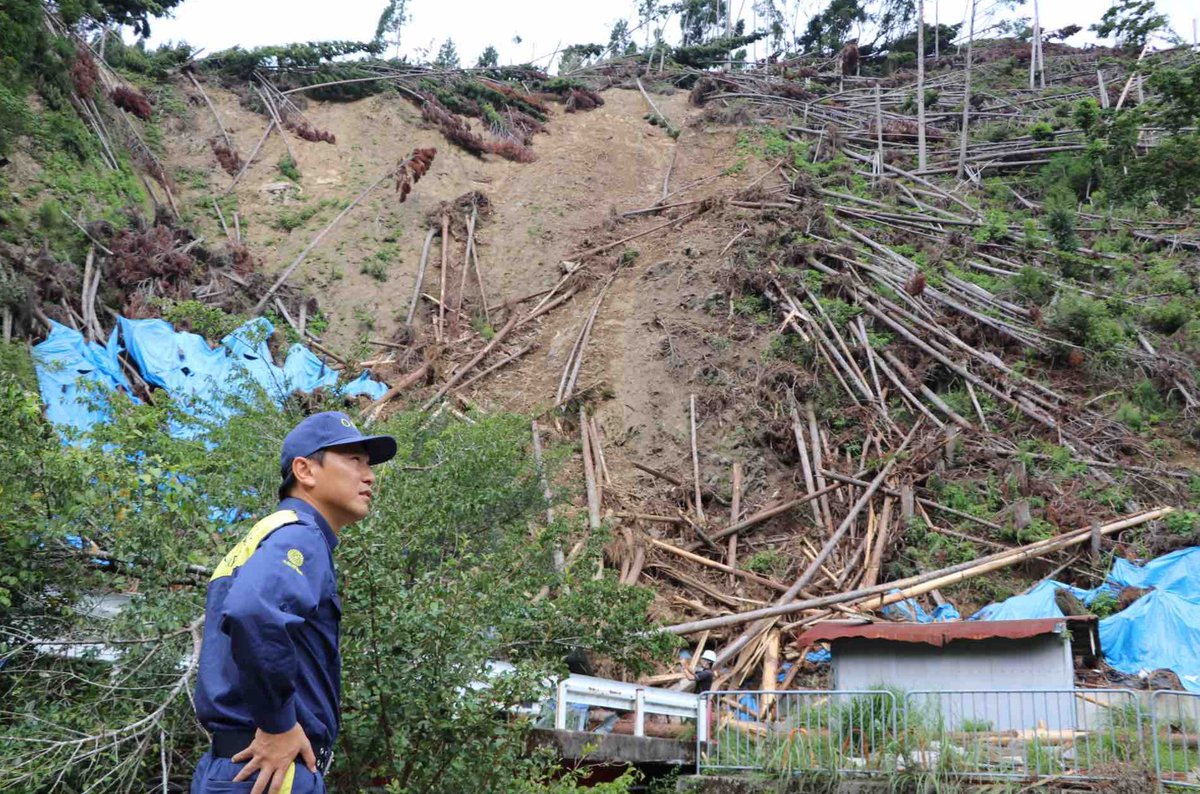
1/Today is #MountainDay so I thought I’d write a little bit about the current state of the mountains (and covering forests) in Japan. This applies to most of Japan but my first hand experience is based around Kansai, Hyogo, Nagano & Okayama
#山の日 #森林 #環境問題 #Forestry
#山の日 #森林 #環境問題 #Forestry
2/About 40% of forest in Japan is plantations of cedar & cypress planted after WW2. To meet the post-war demand the govt. also opened up to importing cheap lumber. Not only did this deforest part of SE Asia & it also undercut domestic industry, making it unviable.
3/This means there are huge tracts of forests not being maintained. These trees have shallow roots and in heavy rain or typhoons the soil erodes easily causing landslides. We saw this in Iwate last year and in Kyoto in 2013 asahi.com/articles/photo… 

4/Since the trees were not thinned these forests are full of low-value lumber that is difficult to access because of steep slopes and infrastructure degraded during the decades of neglect. Even if they can cut them down, often there are no longer saw mills to cut and dry the wood
5/These now mature trees are no longer absorbing carbon and are spewing incredible amounts of pollen every year exacerbating he hay fever problem to boot. asia.nikkei.com/Spotlight/Data…
6/These plantations have also wrecked bio-diversity. Nothing can grow in these dark, cramped forests which means animals are forced to come down from the mountains in search of food. This has lead an increase in wild-animal attacks. This is a graph of bear attacks in recent years 

7/It has also made farming a nightmare with crops constantly being pillaged by monkeys, boar and deer. Deer especially are a problem - with no predators their population has exploded. They eat the bark of the cedar as well as anything else in the forest. 

8/This is a problem that carries over to the natural forests too. In addition the beech trees that grow in these forests are susceptible to disease. Beech die back is also an issue. As far back as the Jomon period Japanese people lived in harmony with the mountains
9/Stewarding them as a sustainable source of food and materials. In the post-war period, this way of life was actively destroyed in the name of modernization with the arrival of cheap oil in the 60s.
10/Demand for natural materials fell & people had to move to the cities for work. While many people intended to move home eventually it became increasingly difficult to get off the hamster wheel, leaving the mountain areas their families previously cared for untended
11/With this the knowledge to take care of the mountains and forests was also lost. In the present day many people who have inherited mountains know virtually nothing about their land, what’s growing there, how to care for it & sometimes not even where their land boundaries are.
12/There is a slow-moving trend in recent years to revitalize the countryside, especially since the pandemic. As well as young people looking for a better life, some companies and educational institutions have moved to their HQ to the countryside or opened satellite branches.
13/There are some interesting companies taking a new approach to forestry: A-zero’s Maki Daisuke is something of a regional development superstar, setting up several successful businesses making the best of the local resources in a sustainable way. a-zero.co.jp
14/Based in Nishi-Awakura, Okayama where they run Mori no Gakko - a wooden flooring factory that also has a DIY space, a cafe & growing space. To go into everything A-zero also have projects Hokkaido & Shiga. morinogakko.jp
15/@yamatowa_ina is located near to Suwa lake in Nagano. Connecting ‘Kurashi’(living) with the forest using the native red pine as the raw material. They also run a farm & also help other businesses make use of local materials & run Ina Forest College yamatowa.co.jp
16/@ForestofCraft in Kyoto is growing the raw materials like urushi, providing a space for crafts people to work & pass on the skills to the next generation as well as designing education programs, Recreating a sustainable connection to the mountains. forest-of-craft.jp
17/There are more I could talk about but for now that’s a taste of the kind of things happening. I hope people find this interesting. I think this is an area that tends to go under the radar but restoring the mountains and surrounding ecosystems is crucial to Japan’s future.
• • •
Missing some Tweet in this thread? You can try to
force a refresh



